Transforming A Basement Kitchen
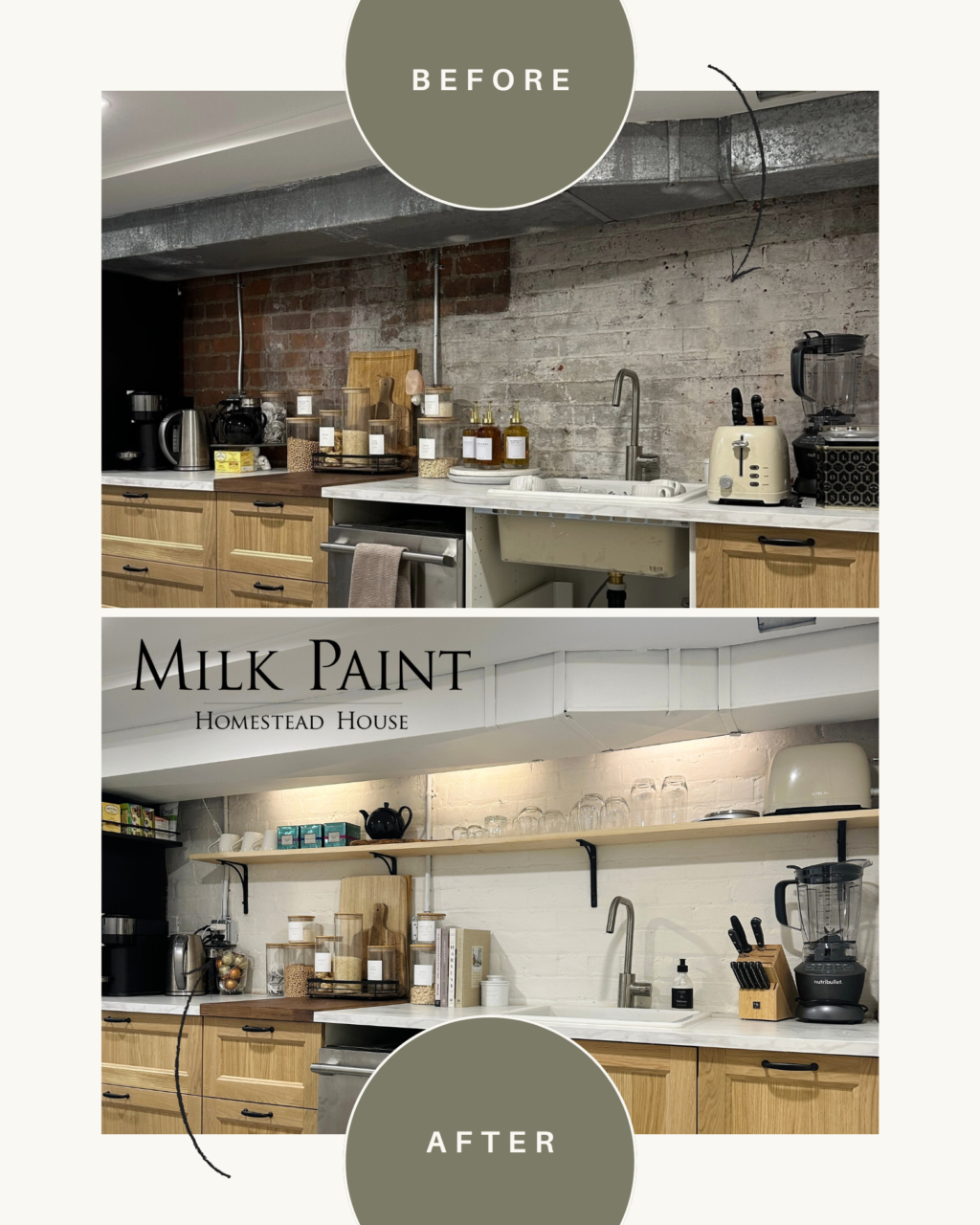
Revamping our basement kitchen and painting our brick wall with milk paint was a rewarding project. Although we loved our basement kitchen, we wanted to lighten and brighten the space. We opted to paint it with Sturbridge White from the Homestead House Milk Paint line. This not only added a painted look but also brought the natural, breathable properties of milk paint, making it an ideal choice for our kitchen setting. In this blog post, we’ll take you through the process of painting brick with milk paint and share some valuable insights we gained along the way.
How To Paint a Brick Wall With Milk Paint
Applying milk paint to the brick wall is a straightforward process. The first step to painting a brick wall is to vacuum or sweep the brick well to get rid of any debris or dust. Then simply select your desired colour (Sturbridge White, in our case), mix equal parts powder to water, and stir thoroughly.
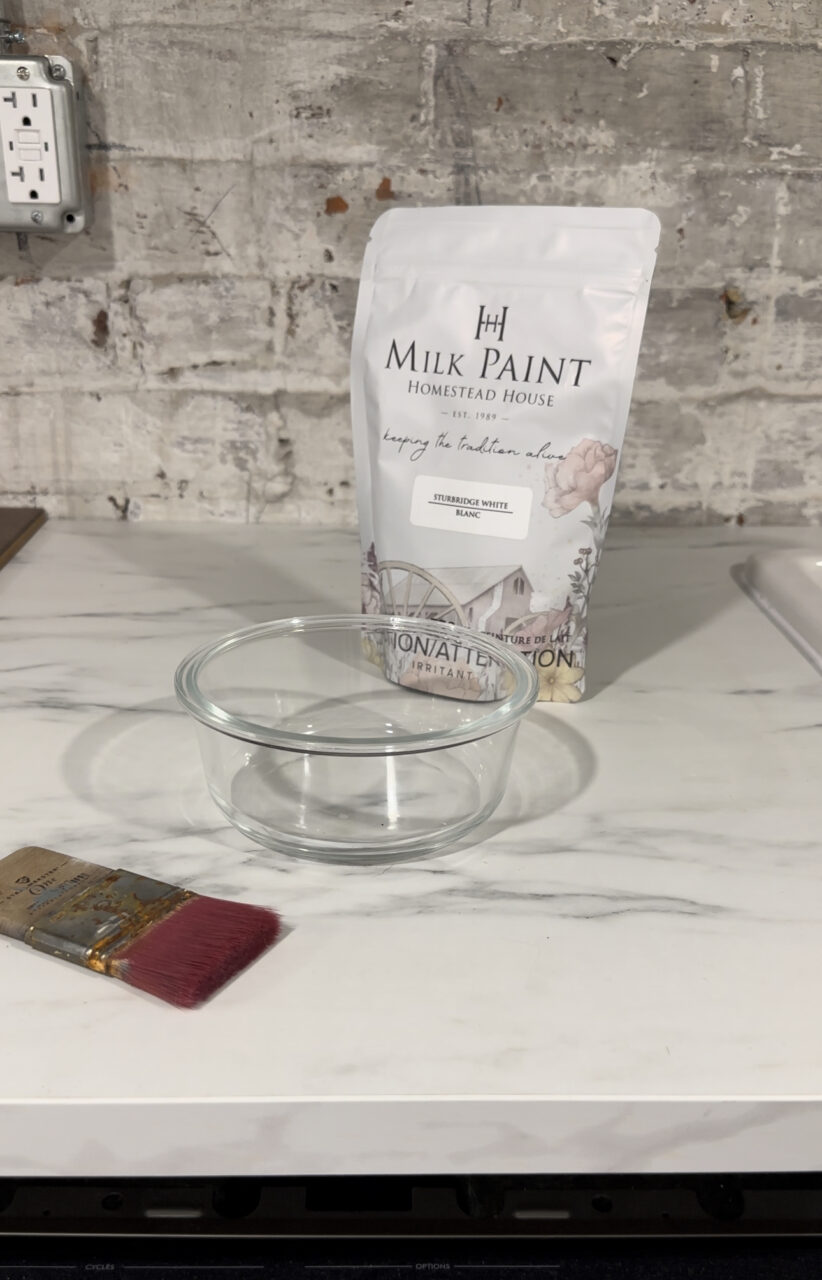
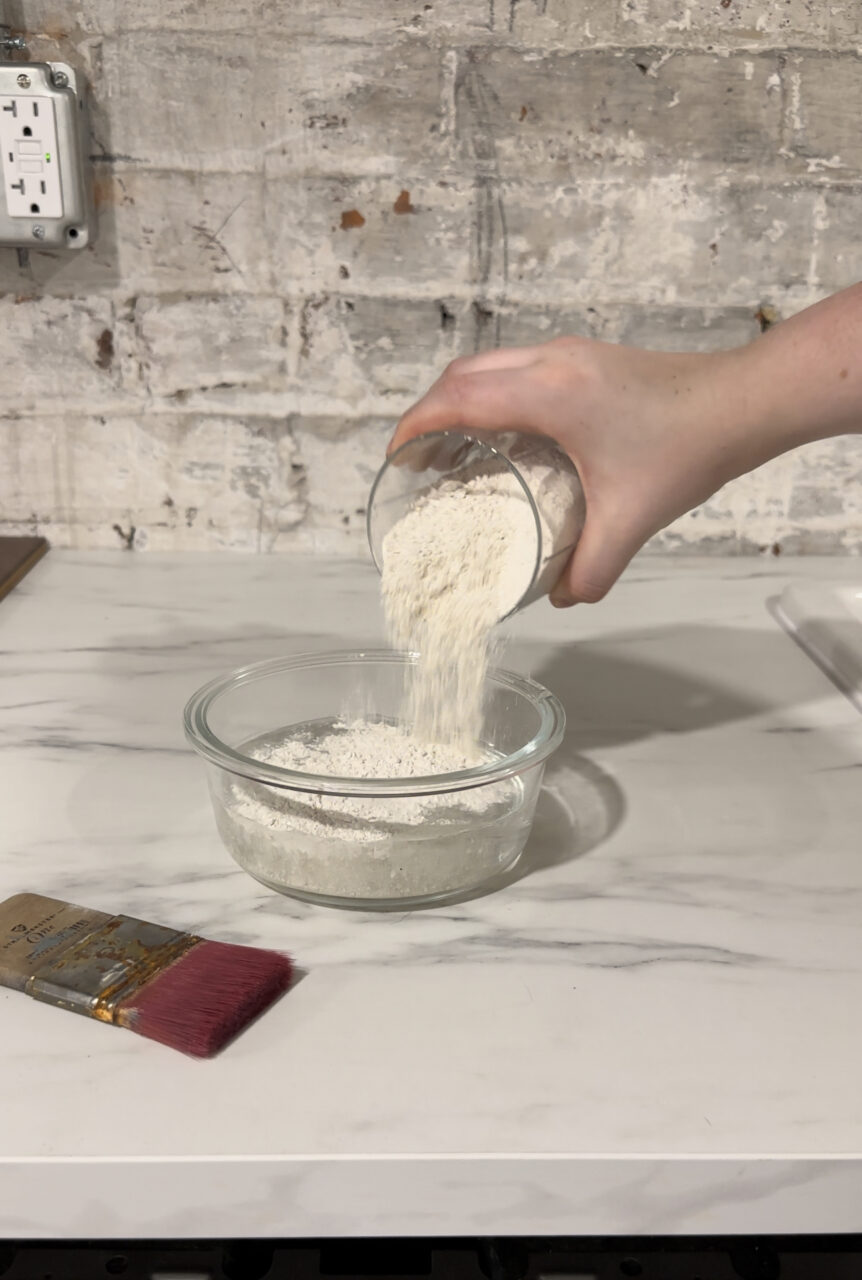

Armed with our favourite brush, the paint is then applied to both the brick and mortar surfaces. The absorbent nature of both the brick and mortar ensures milk paint adheres beautifully, allowing for a seamless finish. Depending on your preference, you can opt for a washed look or, as we did on our milk. painted brick wall apply multiple layers for a more pronounced painted effect.
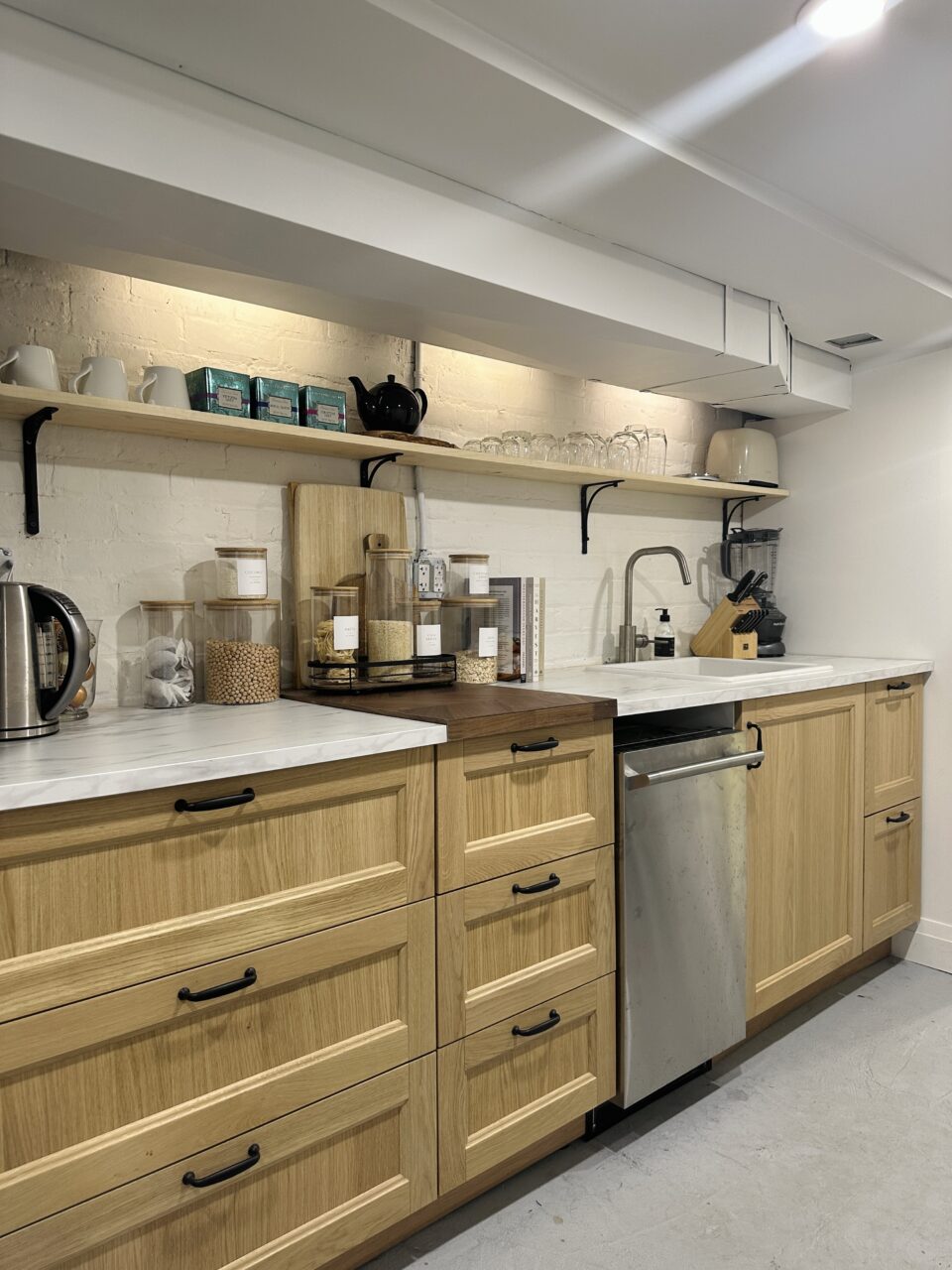
Painting Metal with Milk Paint
Our project extended beyond the brick walls, incorporating the metal vent above. Painting metal with milk paint is not only possible but easy! The preparation of the metal vent involved a thorough cleaning with TSP Alternative to eliminate any grease or debris. We then added some Ultra Grip into the mixed Milk Paint to ensure excellent adhesion. This simple addition enhanced the overall visual appeal, seamlessly blending the metal vent into the painted backdrop. It added to the cohesive aesthetics of the kitchen.

Benefits of Using Milk Paint
Milk Paint is a breathable paint so it is best for porous surfaces such as bare wood walls, plaster walls, brick, or Lime Plaster, that have not been painted previously are the best for absorbing the milk paint. Although, with the proper prep and use of the Bonding Agent ( AKA Ultra Grip ), you can use milk paint on a variety of surfaces. You would just want the surface to be clean and matte. It has natural anti-fungal properties making it a great choice for kitchens or bathrooms. It is a natural, eco-friendly paint option that is simple to use. Just mix with water! Another benefit of Milk Paint is that it comes in powder form so you just mix up what you need, and the rest will last forever if stored in an airtight container.
Milk Painted Brick Wall
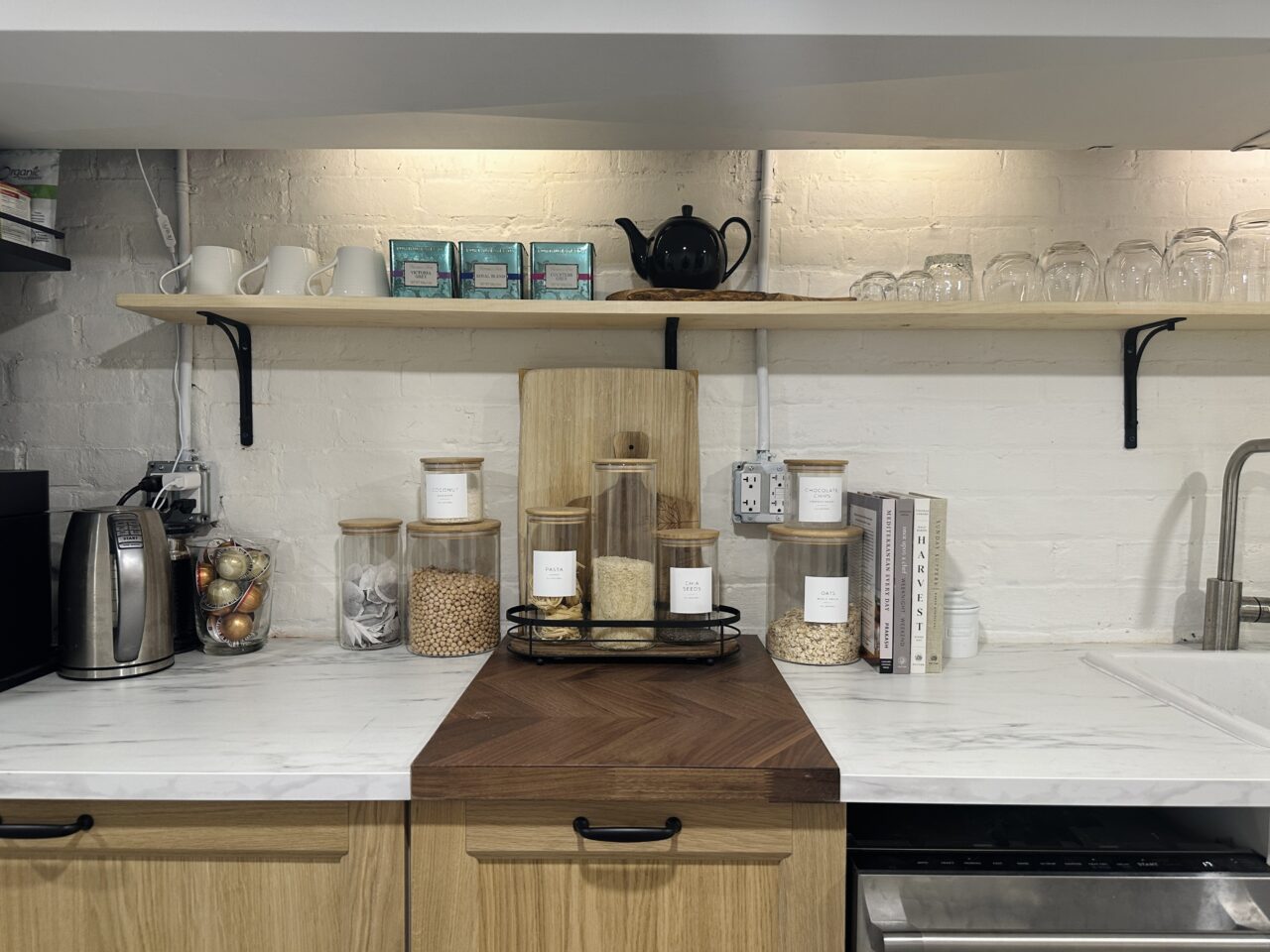
As we revel in the success of our Milk-painted brick wall, we can confidently say that painting with milk paint was a choice that added both charm and character to our space. Painting a brick wall with milk paint not only transformed our basement kitchen but also highlighted the versatility of this medium. Whether you opt for a subtle washed look or a more pronounced painted finish, the process is straightforward and allows for creative expression.



